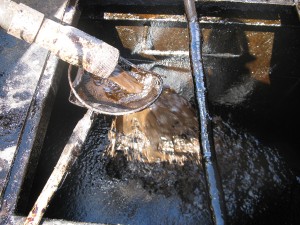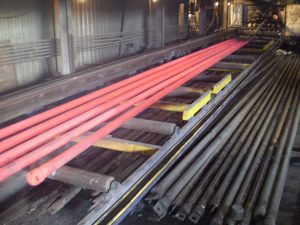Obama Admin sides with activists on methane rule putting small producers out of business
EPA admitted that its methane emissions estimates “greatly increase” as a result of its new methodology
By Katie Brown, PhD, EnergyInDepth
The Obama administration has released its final Control Techniques Guidelines (CTG) for oil and gas production, and as we’ve noted before, it is officially going through with its plan to eliminate an exemption for low producing oil and gas wells (marginal wells), even though it originally intended to exempt these wells due to the enormous economic consequences and the fact that their emissions are negligible.
It was this elimination of the exemption for marginal wells specifically, which caused the anti-fracking group, Clean Air Task Force (CATF), to praise EPA. As Politico reported yesterday after the decision was made official,
The green group Clean Air Task Force praised EPA for removing an exemption for lower-producing wells from the draft guidelines it released earlier this year. The final version of the rules, still not officially posted on EPA’s website, seeks more data on those lower-producing wells before deciding how to proceed.
“It’s critical that EPA move forward swiftly to close this loophole and ensure the guidelines provide comprehensive protection for communities across the country,” CATF advocacy director Conrad Schneider said.
CATF, in their efforts to stop fracking across the country, specifically lobbied EPA to remove the planned exemption for marginal wells based on dubious science (more on that in a minute).
The implications of this decision will not be marginal, however. Thousands of family-owned businesses across the country operate marginal wells — smaller wells that produce 15 barrels or less per day, or 90,000 cubic feet or less of natural gas per day.
These businesses have faced the biggest challenges in today’s low commodity price environment; now under EPA’s rules many of these small companies could essentially be wiped out.
The Interstate Oil and Gas Compact Commission’s (IOGCC) released a report last year, whichfinds the loss of marginal oil and gas wells developed in 2015 would trigger an estimated direct loss of 57,560 jobs in the oil and gas sector and $4.4 billion in direct earnings within the survey’s 29 states.
Yet this report actually only looks at “stripper wells,” which are wells producing 10 barrels or less per day and 60 thousand cubic feet or less of natural gas per day. So if you were to evaluate job and GDP losses from eliminating all marginal wells, the impact would be even greater.
According to National Stripper Well Association Chairwoman Darlene Wallace,
“These new rules will cripple stripper and marginal well owners and operators, and on top of historically low oil prices, we are looking at total disaster. By requiring the addition of new costly equipment requirements and expensive leak detection the economics within the oil and gas industry as a whole will be fundamentally changed, severely and forever.”
Rules will impose prohibitive costs on vulnerable small producers already struggling
Not only did EPA decide not to exempt marginal wells from its fugitive emissions program in the CTG, it is also requiring that producers install new pneumatic control technologies, even though the current ones on marginal wells aren’t typically active and therefore emissions are negligible. This will impose an enormous cost on small producers that will have little-to-no environmental benefit.
EPA is also requiring the installation of vapor recovery units on all storage tanks. Many of these tanks are too old to implement new technologies, which means small producers will have to replace these tanks entirely – and the cost of doing so is prohibitive.
As IPAA rightly stated in its comments to EPA,
“marginal well facilities should be excluded from the scope of the CTG. Clearly, the burden of adding capture equipment – and certainly the burden of replacing storage vessels – cannot be readily borne by marginalwell operations.” (emphasis added)
EPA uses “unconventional” data, pushed by CATF and other activist groups, to justify decision
In its comments to EPA, CATF quoted a study spearheaded by the Environmental Defense Fund (EDF), Zavala-Araiza et. al, which CATF says shows that “lower producing wells can have significant emissions.” CATF would have you believe, counter-intuitively, that small sites can emit the same volume as larger sites.
But Zavala-Araiza et. al actually changes the definition of “super-emitter” in order to make this claim. The researchers of the study define “functional super-emitters” not as sites that emit a lot of methane but as sites where a certain percentage of that well’s methane may be leaking. From the report:
“We designed a conceptual framework that functionally defines superemitting sites as those with thehighest proportional loss rates (methane emitted relative to methane produced).”
It goes on to say,
“[L]ower production sites (10−100 thousand standard cubic feet per day or Mcf/d) are almost twice as likely to be among the top 5% of emitters relative to sites with an order of magnitude higher rates of production (100−1000 Mcf/d) (Table 1). Not unexpectedly, however, the highest producing sites (>1000 Mcf/d) are 4−7 times more likely than other sites to be among the highest emitting 5% of sites. Consequently, the conventional definition of super-emitters would be biased toward the highest producing sites.”
In other words, even the researchers themselves admit that what they are doing is not exactly conventional.
A closer look at the data used in the EDF study demonstrates that marginal wells clearly represent a low component of the methane emissions universe.
The above graphic shows that although a similar percentage of total production can emit from marginal wells when compared to high-producing wells, actual emissions from marginal wells are negligible.
Having said that, however, even the above data on marginal wells from the study are highly questionable considering they indicate high emitting marginal wells leak nearly half of their extracted gas. This is unrealistic as no producer would continue operating a well that is losing half of its value.
EPA’s about face
EPA’s August 2015 draft regulations included a set of control techniques guidelines (CTG) that explicitly acknowledged that marginal operations would be exempt in EPA’s methane rule – or its New Source Performance Standard (NSPS) – on the basis of economic hardship and because emissions at marginal sites are “inherently low.” As EPA put it,
“For purposes of this guideline, the emissions and programs to control emissions discussed herein would apply to the collection of fugitive emissions components at a well site with an average production of greater than 15 barrel equivalents per well per day (15 barrel equivalents), and the collection of fugitive emissions components at compressor stations in the production segment. It is our understanding that fugitive emissions at a well site with low production wells are inherently low and that many well sites are owned and operated by small businesses. We are concerned about the burden of the fugitive emissions recommendation on small businesses, in particular where there is little emission reduction to be achieved. For the purposes of this guideline, fugitive emissions recommendations would not apply to well sites that only contain wellheads.” (p. 9-1; emphasis added)
In December 2015, the Independent Petroleum Association of America (IPAA) and the American Exploration & Production Council (AXPC) cited that exact passage in its official comments to the EPA.
“This recognition is entirely appropriate and accurate,” IPAA and AXPC wrote. The groups added that they “agree that a fugitive emissions program should not apply to facilities with only a single wellhead.”
So how did the Administration, less than a year later, come to exactly the opposite conclusion? Thus far, EPA has claimed that “several commenters” had recommended not including low producing wells and, as the agency puts it,
“Because we did not receive additional data on equipment or component counts for low production wells, we believe that a low production well model plant would have the same equipment and component counts as a non-low production well site.”
But as the CTG clearly shows, it was EPA – not commenters – who had initially suggested marginal wells should be treated differently, and potentially even exempted from the agency’s methane rule. The EPA claimed the industry didn’t adequately support its position, even though the industry was simply agreeing with what the EPA had already formulated!
Data Integrity Concerns
The Administration’s decision on marginal wells adds to growing concerns about its methane rules.
A report last year by NERA Economic Consulting – which has performed analyses for the U.S. Department of Energy, among others – found that the methane rule was based on a single,flawed economic study of the “social cost of methane.” The study was also authored by individuals within the EPA.
Additionally, calculations by Energy In Depth showed that President Obama’s broader methane mitigation strategy – which includes the EPA’s methane rule – would yield only 0.0047 degrees Celsius of avoided warming the end of the century.
The EPA also projected hundreds of millions of dollars in benefits based on the value of natural gas that would be captured and sold as a result of the rule, but the value was based on natural gas prices being $4 per thousand cubic feet (mcf). The current average natural gas price is nearly half that, or $2.16/mcf.
Just weeks before rolling out the final methane rule, the EPA significantly increased its estimates of methane emissions from petroleum and natural gas systems. The EPA did not identify additional emissions, but simply began assuming that marginal wells had emissions profiles similar to those of higher producing wells.
The EPA admitted that its emissions estimates “greatly increase” as a result of its new methodology, “due to the activity data revision alone.”
But as the EPA itself acknowledged last summer, marginal wells have “inherently low” emissions – even though the Administration now says otherwise.
Originally posted at EnergyInDepth on Oct 21, 2016










